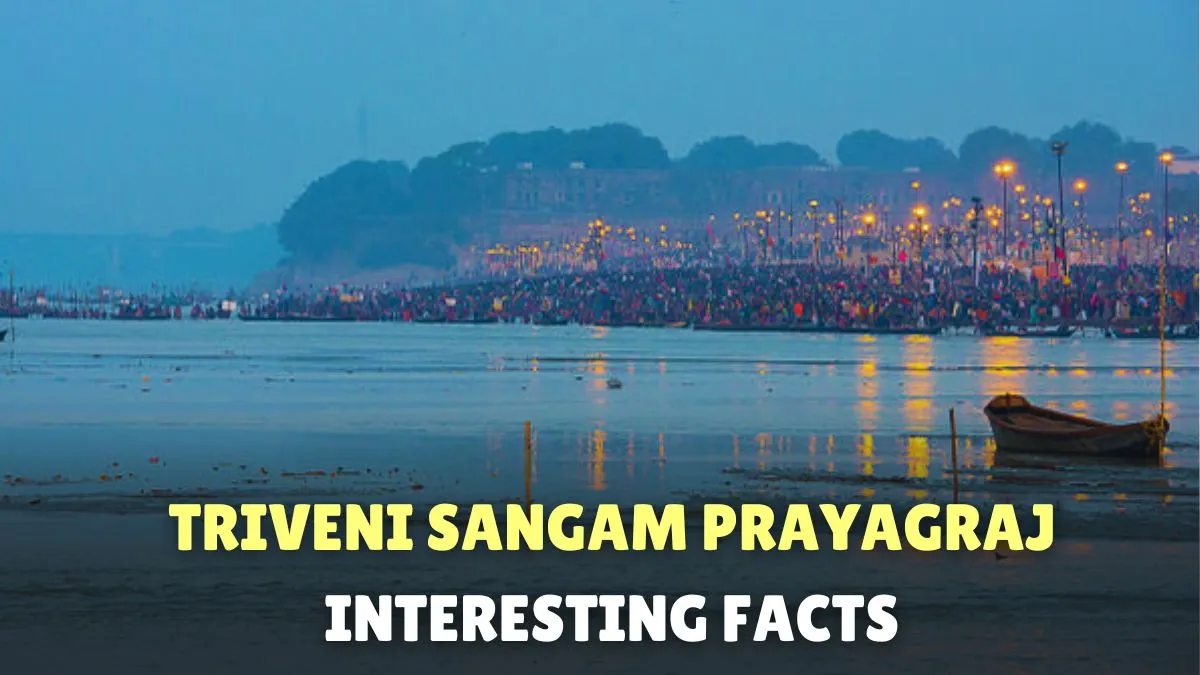- By Kashish Rai
- Fri, 17 Jan 2025 01:32 PM (IST)
- Source:JND
Triveni Sangam Facts: The Triveni Sangam in Prayagraj is a sacred confluence of three rivers: the Ganga, Yamuna and Saraswati. Here, the white waters of the Ganga merge with the blue waters of the Yamuna. This sacred site attracts countless pilgrims, who take boats to bathe at the Sangam's specially erected platforms. The area is particularly picturesque during the Kumbha Mela, with migratory birds adding to the scenery. According to legend, the gods themselves descend upon the Sangam to cleanse their sins, making this a deeply meaningful and spiritual experience for all who visit.
Let us check out the significance and interesting facts about this sacred confluence of three rivers below:
Triveni Sangam Prayagraj: Significance And Interesting Facts About This Sacred Confluence Of Holy Rivers
Importance As Per Hindu Legends
The Triveni Sangam is steeped in ancient significance, believed to be the site where divine nectar (Amrit) fell from the gods' hands. Hindus flock to this sacred pilgrimage point, convinced that a dip in the Sangam's holy waters will purify their souls, washing away sins and paving the way to heaven. Devout pilgrims from across India converge on the Sangam to offer prayers and bathe in the Ganga, Yamuna, and Saraswati rivers. Every 12 years, the Kumbh Mela is held on the Sangam's banks, while the Maha Kumbh Mela takes place every 144 years, drawing millions of devotees to this sacred site.
The Confluence Of Three Rivers: Ganga, Yamuna And Saraswati
The renowned playwright Kalidasa vividly described the Triveni Sangam, where the Ganga and Yamuna rivers converge, as a breathtaking union of white and blue waters, likening it to a garland of intertwined lotuses. Located in Prayagraj, the Sangam marks the confluence of three rivers: the Ganges, Yamuna, and the invisible Saraswati, which flows underground. The murky, pale-yellow waters of the Ganges merge with the vibrant blue waters of the Yamuna, creating a striking visual contrast. During the annual flood, the point of confluence becomes visible, revealing the Ganges' shallow waters just 4 feet deep alongside the Yamuna's much deeper waters which reach 40 feet.

Devotees take a sacred plunge in the Trivent Sangam during Mahakumbh Mela in Prayagraj. (Image Source: Freepik)
Place For Redemption And Liberation
The Triveni Sangam is a revered pilgrimage site, known as the King of Confluences. This sacred spot offers devotees a profound opportunity for spiritual growth. Taking a dip in the confluence is believed to not only wash away sins but also liberate individuals from the cycle of birth and death. The term "Teerth" refers to a ford or crossing point and the Sangam serves as a threshold, allowing the faithful to transcend the earthly realm and connect with the divine. By crossing this sacred river of consciousness, devotees can attain a state of immortality and unity with the divine.
Significance In Mahakumbh
In Hinduism, the Prayagraj Triveni Sangam holds immense significance, particularly during the Mahakumbh festival. This sacred confluence of the Ganga, Yamuna, and Saraswati rivers is believed to be the site where the gods themselves descended to earth, imbuing the waters with divine energy. As the largest gathering of pilgrims in the world, the Mahakumbh celebrates this sacred event, drawing millions to the Sangam for a holy dip. According to Hindu mythology, bathing in the Sangam's waters during the Mahakumbh grants devotees spiritual liberation, washing away their sins and freeing them from the cycle of birth and death. This sacred ritual is a once-in-a-lifetime opportunity for devotees to attain spiritual enlightenment and connect with the divine.
(Disclaimer: This is based on general public information. Jagran English does not confirm its veracity. Before adopting any measures, consult an expert in the relevant field.)
